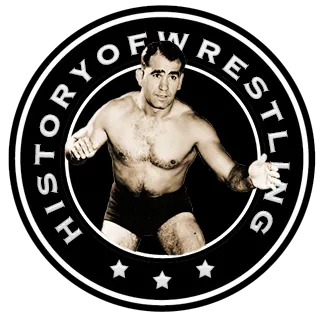January 24, 1963, Washington, DC

Vince McMahon Address NWA Members
Vince J. McMahon was almost universally respected, not only by fans of his Northeastern territory promotion, or even the wrestlers who worked for him, but even by his rival promoters. While he generated far larger gates than most of his competitors, McMahon often worked to help other promotions by lending talent when necessary, allowing his rivals to draw enough fans to their house show to survive the lean times. While he was never the president of the National Wrestling Alliance (NWA), the governing body for professional wrestling in the United States, he was always one of the most important voices in the organization.
At the same time, McMahon was a businessman and revenues for his company were his priority. He and his business partner Toots Mondt controlled the lucrative Northeast territory, the most profitable territory in the United States. Central to their business plan was to have the best talent circulating through their territory. This included, of course, having the NWA World Champion wrestling for them.When Lou Thesz was the NWA Champion, McMahon and Mondt were unable to exert enormous control over him. However, by the time Pat O’Connor held the title, McMahon did have control over “Nature Boy” Buddy Rogers, at the time acknowledged by almost everybody to be the best draw in the business and the number one contender for the belt.
When Rogers defeated O’Connor in front of 38,775 fans in Comiskey Park in Chicago, Illinois, promoters across the country anticipated huge turnouts when the new champion visited their parts of the country. Unfortunately, McMahon and Mondt had different ideas, keeping Rogers in the Northeast, wrestling from Boston to Baltimore. While they did send Rogers to many of the bigger NWA towns to wrestle, because they controlled his bookings through their Capital Wrestling office, they monopolized his time. Promoters across the country cried foul and the NWA board of directors had to come up with a solution. That decision was to bring back Lou Thesz to face Rogers, knowing that if push came to shove, Thesz could defeat Rogers in a shoot match and take the belt off of him. Thus, on January 24, 1963 in Toronto, Ontario, Lou Thesz defeated Rogers in a one fall match to regain the NWA World Title. While the majority of promoters celebrated, McMahon and Mondt refused to acknowledge the title change, arguing that the title could only change hands in a two out of three falls match. Because Thesz would not be traveling through their territory as often as Rogers had, and because Thesz was not a big draw in the Northeast anyway, the change was detrimental to their revenue stream. Thus, they felt they had to make a major decision. That decision was to withdraw from the National Wrestling Alliance.
 McMahon and Mondt withdrew the Capitol Wrestling Corporation from the NWA and renamed the company the World-Wide Wrestling Federation on January 24, 1963. April 11, 1963 Willie Gilzenberg announced on the “Capitol Wrestling From Washington, DC” television program that the World-Wide Wrestling Federation had been legally formed and he and television host Ray Morgan then interviewed Buddy Rogers. (WWWF President) Gilzenberg presented Rogers with the new WWWF World Heavyweight title, explaining that Rogers had defeated Antonino Rocca in the finals of a tournament in Rio De Janeiro, Brazil (the tournament was fictitious and the title belt was actually Rogers NWA US title belt, which he had never relinquished). While putting their title belt on Rogers gave the new company instant credibility, Rogers was in the midst of health issues. Furthermore, he was the same Buddy Rogers whom promoters had found difficult to work with in the past. The WWWF thus turned to a new budding superstar in Bruno Sammartino, who would defeat Rogers in 48 seconds with a bearhug on May 17, 1963, to claim the WWWF World title. Sammartino would hold the WWWF championship for the next 2,803 days.
McMahon and Mondt withdrew the Capitol Wrestling Corporation from the NWA and renamed the company the World-Wide Wrestling Federation on January 24, 1963. April 11, 1963 Willie Gilzenberg announced on the “Capitol Wrestling From Washington, DC” television program that the World-Wide Wrestling Federation had been legally formed and he and television host Ray Morgan then interviewed Buddy Rogers. (WWWF President) Gilzenberg presented Rogers with the new WWWF World Heavyweight title, explaining that Rogers had defeated Antonino Rocca in the finals of a tournament in Rio De Janeiro, Brazil (the tournament was fictitious and the title belt was actually Rogers NWA US title belt, which he had never relinquished). While putting their title belt on Rogers gave the new company instant credibility, Rogers was in the midst of health issues. Furthermore, he was the same Buddy Rogers whom promoters had found difficult to work with in the past. The WWWF thus turned to a new budding superstar in Bruno Sammartino, who would defeat Rogers in 48 seconds with a bearhug on May 17, 1963, to claim the WWWF World title. Sammartino would hold the WWWF championship for the next 2,803 days.
In the short term, the NWA continued steadily under Thesz, especially since the WWWF (as well as the American Wrestling Association, headlined by Verne Gagne) were considered regional, instead of national, promotions. The WWWF rejoined the NWA in 1971 after Sammartino dropped the championship belt to Ivan Koloff and remained a member until 1979. While the NWA remained dominant for the next decade, the popularity of Sammartino caused the WWWF to grow even more popular, and when McMahon’s son (Vince K. McMahon) bought the company from his father, he embarked upon a risky venture, raiding NWA territories and effectively either buying them out or putting them out of business.


